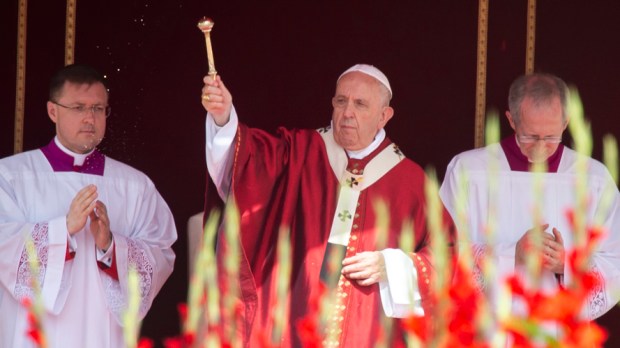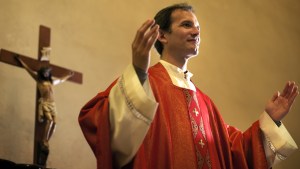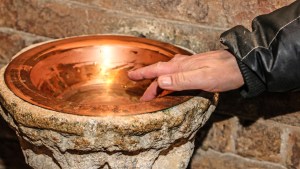Instead of performing the normal Penitential Rite, a priest can choose to sprinkle his congregation at Mass with water.
This may seem strange to some, but it is a practice that has a rich symbolism.
The General Instruction of the Roman Missal highlights this option, especially during the Easter season.
From time to time on Sundays, especially in Easter Time, instead of the customary Penitential Act, the blessing and sprinkling of water may take place as a reminder of Baptism. (GIRM, 51)
This is revealed even more directly in the blessing of water that can take place before the priest sprinkles everyone at Mass.
Dear brethren (brothers and sisters), let us humbly beseech the lord our God to bless this water he has created, which will be sprinkled on us as a memorial of our Baptism. may he help us by his grace to remain faithful to the spirit we have received.
Water has rich symbolism, as the Catechism of the Catholic Church explains.
The symbolism of water signifies the Holy Spirit’s action in Baptism, since after the invocation of the Holy Spirit it becomes the efficacious sacramental sign of new birth: just as the gestation of our first birth took place in water, so the water of Baptism truly signifies that our birth into the divine life is given to us in the Holy Spirit. As “by one Spirit we were all baptized,” so we are also “made to drink of one Spirit.” Thus the Spirit is also personally the living water welling up from Christ crucified as its source and welling up in us to eternal life. (CCC 694)
The sprinkling rite, besides recalling our baptism, could also be connected with Jesus’ actions at the Last Supper. Jesus washed the feet of his disciples before celebrating the first Eucharist, performing an act of ritual cleansing before the feast.
It is a beautiful option that priest’s can choose at Mass and has rich symbolism that brings us deeper into the Paschal mystery.



